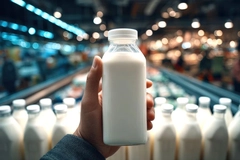World Packaging Organisation publishes Waste Stream Mapping Guides for global recycling
.png)
18 May 2022 --- The World Packaging Organisation (WPO), in conjunction with FH Campus University of Applied Sciences, Austria, and ECR Community, is launching the Waste Stream Mapping Guides as the second stage of the Global Packaging Design for Recycling Guide program.
Circular Design is only effective when the relevant collection, sorting and recycling streams exist. From the mapping of the Waste Streams, we can better determine technically recyclable packaging types in countries across the world, the WPO explains.
“To be able to apply recyclable packaging design, a certain fundamental knowledge of sorting and recycling processes is necessary. Packaging must, therefore, be suitable for state-of-the-art sorting and recycling processes in addition to its basic functions (for example, storage, transport, product protection, product presentation and convenience),” it says.
“The Waste Stream Mapping Guides are essential global decision-making tools that will enable anyone to access current information on technically recyclable packaging across the world.”
Boosting regional and local recycling
The guides also come with a “How to Use Guide” for the Global Packaging Design for Recycling Guide so that they can be used hand-in-hand when packaging is being designed.
The waste stream mapping guides are a part of the Global Packaging Design for Recycling Guide program. A global “Packaging Design for Recycling Guide” has been developed by the WPO, Circular Analytics, FH Campus University of Applied Sciences and ECR Community.
“Design for recycling is part of circular product design and represents an important basis for holistic environmental sustainability assessment. Accordingly, circularity means that the packaging is designed in such a way that the highest possible recycling of the materials in use can be achieved,” says the WPO.
“The goals here are resource conservation, the longest possible service life, material-identical recycling (closed-loop recycling) or the use of renewable materials. Circular packaging should therefore be designed and manufactured so that it can be reused (reusable solution) and/or that the raw materials used can be reused to a large extent as secondary raw materials after the use phase (recycling) and/or consist of renewable raw materials.”
The “Packaging Design for Recycling Guide” is a starting point to understanding Best Practice examples using state-of-the-art technology that can then be applied and tailored to suit the recovery and recyclability capabilities and infrastructure on a regional and local level.
Edited by Joshua Poole











